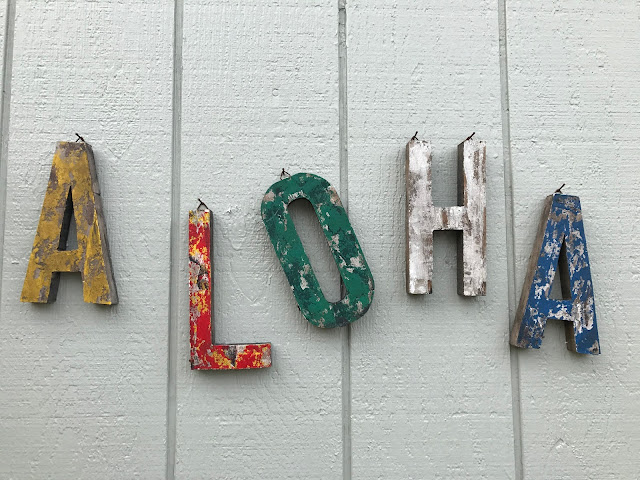Aloha from Hawaii! We've been here for two weeks, one with family to Oahu and Kauai, and one week in Big Island. This is the first of a series of four blog posts: one for each island we visited, plus Priscilla will write a food post.
Anyway, Hawaii is rad, and yes I did watch Moana twice on the flight in. We started in Oahu. Oahu is home to the city of Honolulu (4th highest cost of living in the U.S.), and most of Hawaii's population. Hawaii is a melting pot of many cultures: native Hawaiians, Japanese, Chinese, Filipino, Portuguese, and mainland American transplants and military personnel.
The short version of Hawaiian history is as follows: Polynesian settlers arrive, bringing essential plants (i.e. coconut, taro, sweet potato) and animals (pigs, chickens, and dogs) with them. All the tropical fruits you associate with Hawaii, like coffee, macadamia nuts, bananas, and pineapples, are introduced later. Hawaii evolves a rich, independent culture with a caste system led by a royal elite. Chief Kamehameha the Great unites the islands shortly after Hawaii's discovery by Europeans in 1778. His son Liholiho abolishes the Hawaiian religion in 1820. Successive waves of foreigners arrive: sailors, missionaries, farmers, and ranchers. Foreign influence increases: sugar barons control the economy, overthrow the Hawaiian monarchy in 1893, and the U.S. annexes the island at their request. In the 20th century Hawaii becomes a major tourist destination, Japan attacks Pearl Harbor in 1941, Hawaii gains statehood in 1959, and the native Hawaiian movement grows in strength.
In Oahu we hit some typical tourist sights: the beach at Waikiki, a luau, and the Dole pineapple plantation (with the world's largest hedge maze).
We also saw the Bishop Museum's excellent exhibits on Polynesian cultural and history, including the wayfinding techniques the Polynesians used to navigate the long distances between islands.
We tried to go to Pearl Harbor but couldn't get tickets, so drove around the coast instead and took in scenic views, discovered some minisubs, and watched paragliders.
Highlight of Oahu was catching up with an old friend, and the fish auction he took us to see! All the long line fish caught in Hawaii, like Tuna, Opah, Swordfish, and Mahi Mahi, are sold at Pier 38. Our friend used to be an observer on these types of ships, and would spend weeks at sea monitoring the catch and taking scientific samples. The ships come in and offload their catch in the middle of the night, and the fish are auctioned off at dawn to local restaurants and to distributors who airfreight back to the mainland. It's high stakes to select high-quality fish, and we learned some tricks to identify fish which spent too long dead on the line, or have parasites. We met a distributor who told us "fortunes are made and lost" here.
Also, Hawaii is the last U.S. state I hadn't visited, so happy 50th to me!
Next up: Kauai and the Big Island!
-Peter
Anyway, Hawaii is rad, and yes I did watch Moana twice on the flight in. We started in Oahu. Oahu is home to the city of Honolulu (4th highest cost of living in the U.S.), and most of Hawaii's population. Hawaii is a melting pot of many cultures: native Hawaiians, Japanese, Chinese, Filipino, Portuguese, and mainland American transplants and military personnel.
The short version of Hawaiian history is as follows: Polynesian settlers arrive, bringing essential plants (i.e. coconut, taro, sweet potato) and animals (pigs, chickens, and dogs) with them. All the tropical fruits you associate with Hawaii, like coffee, macadamia nuts, bananas, and pineapples, are introduced later. Hawaii evolves a rich, independent culture with a caste system led by a royal elite. Chief Kamehameha the Great unites the islands shortly after Hawaii's discovery by Europeans in 1778. His son Liholiho abolishes the Hawaiian religion in 1820. Successive waves of foreigners arrive: sailors, missionaries, farmers, and ranchers. Foreign influence increases: sugar barons control the economy, overthrow the Hawaiian monarchy in 1893, and the U.S. annexes the island at their request. In the 20th century Hawaii becomes a major tourist destination, Japan attacks Pearl Harbor in 1941, Hawaii gains statehood in 1959, and the native Hawaiian movement grows in strength.
In Oahu we hit some typical tourist sights: the beach at Waikiki, a luau, and the Dole pineapple plantation (with the world's largest hedge maze).
We also saw the Bishop Museum's excellent exhibits on Polynesian cultural and history, including the wayfinding techniques the Polynesians used to navigate the long distances between islands.
We tried to go to Pearl Harbor but couldn't get tickets, so drove around the coast instead and took in scenic views, discovered some minisubs, and watched paragliders.
Highlight of Oahu was catching up with an old friend, and the fish auction he took us to see! All the long line fish caught in Hawaii, like Tuna, Opah, Swordfish, and Mahi Mahi, are sold at Pier 38. Our friend used to be an observer on these types of ships, and would spend weeks at sea monitoring the catch and taking scientific samples. The ships come in and offload their catch in the middle of the night, and the fish are auctioned off at dawn to local restaurants and to distributors who airfreight back to the mainland. It's high stakes to select high-quality fish, and we learned some tricks to identify fish which spent too long dead on the line, or have parasites. We met a distributor who told us "fortunes are made and lost" here.
Also, Hawaii is the last U.S. state I hadn't visited, so happy 50th to me!
Next up: Kauai and the Big Island!
-Peter














No comments:
Post a Comment